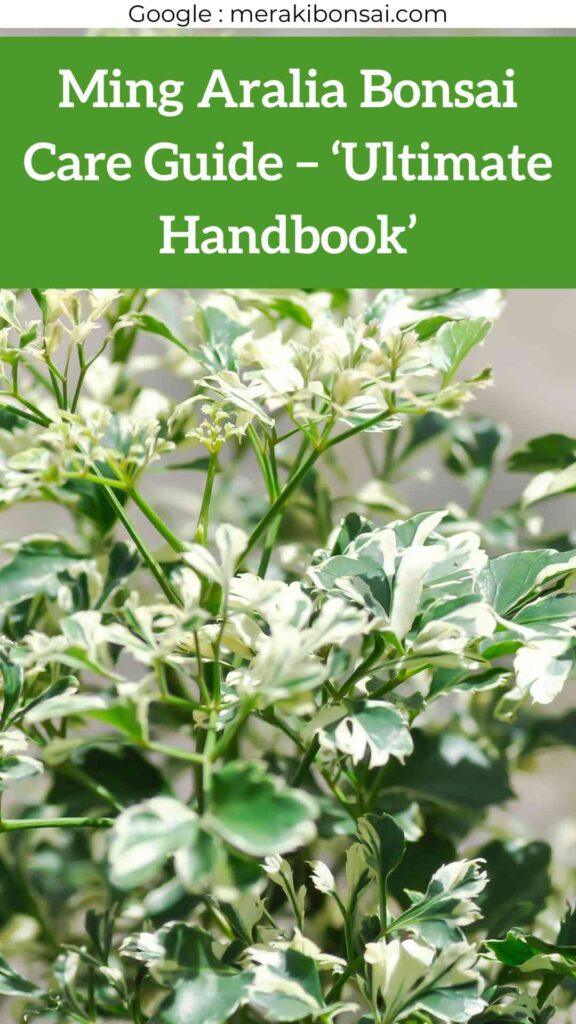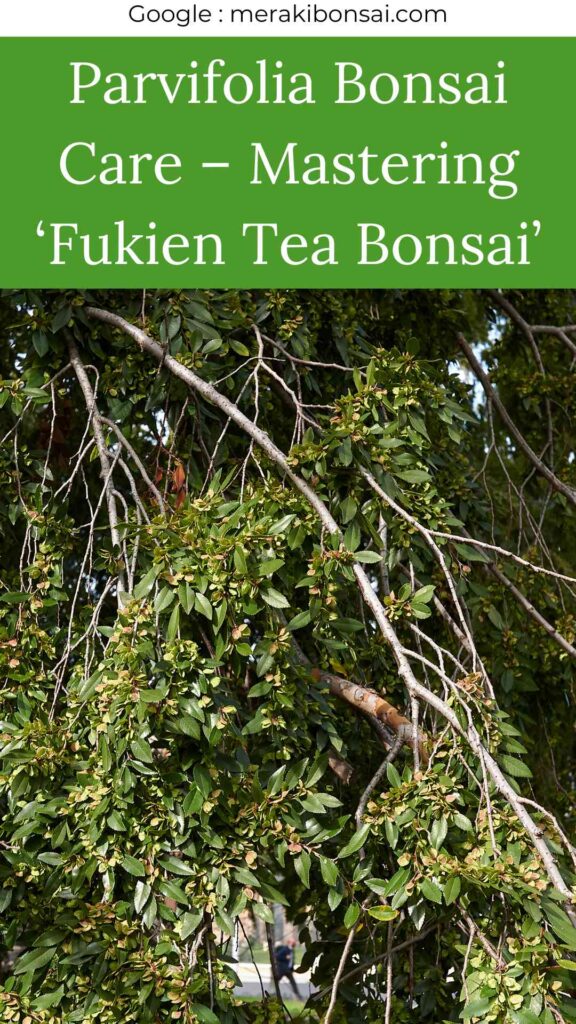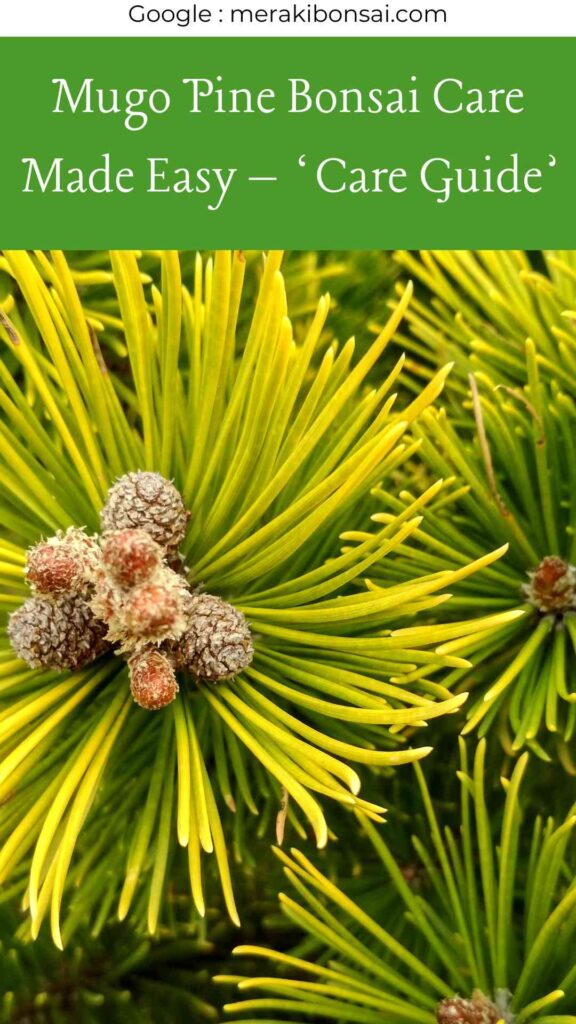
Ming Aralia Bonsai Care Guide – ‘Ultimate Handbook’
Hey there, bonsai enthusiasts! It’s Raima here, your friendly neighborhood bonsai expert. For over a decade, I’ve been nurturing these little green wonders, and today, I’m thrilled to share my knowledge about one of my favorites – the Ming Aralia bonsai. Whether you’re a newbie or a seasoned grower, this guide will walk you through everything you need to know to keep your Ming Aralia thriving. So, grab your favorite beverage, and let’s dive into this leafy adventure!
Introduction to Ming Aralia Bonsai
First things first, let’s get to know our star. The Ming Aralia, scientifically known as Polyscias fruticosa, is a tropical plant native to Southeast Asia. It’s beloved in the bonsai world for its delicate, fern-like leaves and its ability to adapt to indoor environments. This makes it perfect for those of us who want to bring a touch of nature into our homes without worrying about the plant withering away.
Now, you might be wondering, “Raima, why should I choose a Ming Aralia for my bonsai journey?” Great question! These little beauties are not just pretty faces. They’re tough cookies that can handle a bit of neglect (though I don’t recommend testing their limits!). Plus, their unique leaf structure adds a refreshing twist to your bonsai collection. It’s like having a miniature tropical forest right on your windowsill!
Setting Up Your Ming Aralia’s New Home
Alright, you’ve got your Ming Aralia, and it’s love at first sight. Now, let’s make sure it feels right at home. The first order of business? Finding the perfect pot. Trust me, it’s not just about looks (although that’s important too!).
For your Ming Aralia, you’ll want a pot that’s both functional and stylish. I recommend this Bonsai Pot. It’s not only cute as a button but also has the right drainage holes to keep your bonsai’s roots happy. If you want to jazz things up a bit, check out this Ceramic Bonsai Planter Pot. It comes in various colors to match your décor. Remember, a good pot is like comfy shoes for your bonsai – it needs to fit well and look good!
Next up, let’s talk soil. Your Ming Aralia isn’t picky, but it does prefer well-draining soil. A mix of regular potting soil, perlite, and a bit of sand works wonders. This combo ensures that water doesn’t pool around the roots, preventing the dreaded root rot. No one likes soggy feet, including your bonsai!
Light, Location, and Temperature: The Golden Trio
Now that your Ming Aralia is potted up, let’s find it the perfect spot in your home. These little guys love bright, indirect light. Think of it as the plant equivalent of sitting in the shade on a sunny day. A north or east-facing window is ideal. If you’re worried about your bonsai getting enough light, especially during those short winter days, consider getting these Bonsai Indoor Lights. They’re like a mini sun for your plant!
As for temperature, Ming Aralias are true tropical plants. They thrive in warm conditions, ideally between 60-80°F (15-27°C). Don’t let them get too chilly – anything below 50°F (10°C) is a big no-no. Also, keep them away from drafty windows and air conditioning vents. It’s like us avoiding that one friend who always turns the AC up too high!
Watering Your Ming Aralia: Not Too Much, Not Too Little
Watering can be a bit tricky with bonsai. Too much, and you risk root rot; too little, and your plant might throw a tantrum (i.e., drop leaves). With Ming Aralias, the key is to keep the soil consistently moist but not waterlogged.
I like to use the “poke test.” Stick your finger about an inch into the soil. If it feels dry, it’s time to water. When you do water, make sure you give it a good soak. This Watering Can is perfect for the job. Its long spout lets you direct water right where it’s needed without disturbing the delicate foliage.
Remember, your bonsai’s watering needs will change with the seasons. In summer, you might need to water daily, while in winter, once a week might suffice. It’s all about paying attention to your plant’s cues.
Feeding Your Bonsai: A Little Nibble Goes a Long Way
Just like us, bonsai trees need their vitamins! Fertilizing is crucial for your Ming Aralia’s growth and overall health. But remember, with bonsai, less is more. You want controlled growth, not a jungle in your living room!
I recommend using a balanced, water-soluble fertilizer like this Fertilizer. It has all the essential nutrients your bonsai needs. During the growing season (spring and summer), feed your Ming Aralia every two weeks. In fall and winter, cut back to once a month. It’s like putting your plant on a little diet – just enough to keep it healthy, but not so much that it outgrows its adorable bonsai form.
Pruning and Shaping: The Art of Bonsai
Now, onto the fun part – pruning and shaping! This is where you get to play artist and help your Ming Aralia achieve that classic bonsai look. But remember, we’re guiding the plant, not forcing it. It’s a partnership!
Start with a good set of tools. These Bonsai Pruning Tools have everything you need to get started. For more delicate work, like trimming those tiny leaves, these Bonsai Pruning Scissors are a game-changer.
When pruning, focus on maintaining the shape and removing any dead, damaged, or crossing branches. Don’t be afraid to take your time and step back often to see the big picture. It’s like giving your bonsai a haircut – you want it to look good from all angles!
For shaping, you’ll need wire. I prefer using Anodized Aluminum Wire for newer, more flexible branches, and Annealed Copper Wire for thicker, more established ones. Gently wrap the wire around the branches you want to shape, and slowly bend them into place. Just be careful not to leave the wire on for too long, or it might scar your bonsai.
Pest Control: Keeping the Critters at Bay
Even in our homes, pests can be a problem. Common culprits for Ming Aralias are spider mites, mealybugs, and scale insects. But don’t worry, we’ve got this!
First line of defense? Regular inspections. Every week, take a close look at your bonsai, especially under the leaves. If you spot any unwelcome guests, act fast. This Organic Insecticide is my go-to. It’s tough on pests but gentle on your bonsai.
Prevention is also key. Good air circulation, avoiding overwatering, and occasionally misting your bonsai can discourage pests. It’s like creating an environment where pests feel unwelcome, but your Ming Aralia feels right at home.
Propagation: Sharing the Bonsai Love
One of the joys of bonsai is sharing your passion with others. And guess what? Ming Aralias are super easy to propagate! It’s like having a plant that gives you little green babies to share with friends.
The easiest method is through stem cuttings. In spring or early summer, take a 4-6 inch cutting from a healthy stem. Remove the lower leaves, dip the cut end in rooting hormone, and plant it in a small pot with moist soil. Keep it warm and humid, and in a few weeks, you’ll have a new Ming Aralia to love or gift.
Troubleshooting Common Issues
Even with the best care, sometimes things go a bit sideways. But don’t fret! Most issues are fixable if caught early. That’s where this nifty Soil Moisture Meter comes in handy. It takes the guesswork out of watering.
Yellowing leaves? It could be overwatering or poor drainage. Check your soil and adjust your watering schedule. Leaf drop? This could be due to temperature shock or dry air. Ensure your bonsai is in a stable environment and consider a small humidifier.
Brown leaf tips often indicate low humidity or too much fertilizer. Mist your plant regularly and dial back on the plant food. Remember, every issue is a learning opportunity. That’s how we grow as bonsai enthusiasts!
The Joy of Ming Aralia Bonsai
Whew! We’ve covered a lot, haven’t we? But here’s the thing: growing a Ming Aralia bonsai isn’t just about following rules. It’s about the joy of nurturing something beautiful, the satisfaction of seeing your little tree thrive, and the peace it brings to your space.
Every morning, when I check on my bonsai, it’s like saying hello to an old friend. Each new leaf, each subtle change in shape – it’s a reminder of the incredible resilience and beauty of nature. And the best part? You get to guide that beauty, to shape it in your own unique way.
So, whether you’re just starting out or you’ve been at this bonsai game for a while, I hope this guide has inspired you. Your Ming Aralia journey is going to be amazing, filled with growth (both for your plant and for you!). Remember, every bonsai master started somewhere. With patience, love, and maybe a few mistakes along the way, you’ll get there too.
Before I let you go, I want to say a big thank you. Your interest in bonsai, your passion for learning – it’s what keeps me writing these guides. If you’ve found this helpful, consider buying me a coffee at Ko-fi. Every little bit helps me keep the bonsai wisdom flowing!
Now, go forth and bonsai! Your Ming Aralia is waiting to embark on this green adventure with you. Happy growing, and remember, in the world of bonsai, the journey is just as beautiful as the destination.
FAQs: Your Ming Aralia Bonsai Questions Answered
- Q: How often should I water my Ming Aralia bonsai?
A: Water when the top inch of soil feels dry. This could be daily in summer and once a week in winter. Always check the soil before watering to avoid overwatering. - Q: Can I keep my Ming Aralia bonsai outdoors?
A: Ming Aralias prefer indoor environments. They can go outside in summer if temperatures are consistently above 60°F (15°C), but bring them in when it gets cooler. - Q: Why are the leaves on my Ming Aralia turning yellow?
A: Yellowing leaves often indicate overwatering or poor drainage. Ensure your pot has drainage holes and adjust your watering schedule. - Q: How do I increase humidity for my bonsai?
A: Mist your bonsai regularly, place a humidity tray (a tray of water and pebbles) nearby, or use a small humidifier. - Q: How often should I repot my Ming Aralia bonsai?
A: Repot every 2-3 years in spring. This refreshes the soil and gives you a chance to prune the roots for healthy growth. - Q: Can I propagate my Ming Aralia from cuttings?
A: Absolutely! Take a 4-6 inch stem cutting in spring or early summer, remove lower leaves, use rooting hormone, and plant in moist soil. - Q: How much light does a Ming Aralia bonsai need?
A: They prefer bright, indirect light. An east or north-facing window is ideal. If natural light is limited, use grow lights. - Q: What pests should I watch out for?
A: Common pests include spider mites, mealybugs, and scale insects. Regular inspections and organic insecticides can keep them at bay. - Q: How do I shape my Ming Aralia bonsai?
A: Use bonsai pruning tools to remove unwanted growth and wire to gently shape branches. Always wire carefully to avoid scarring. - Q: My bonsai is dropping leaves. What’s wrong?
A: Leaf drop can be due to temperature shock, drafts, or dry air. Ensure a stable environment and consider increasing humidity.


